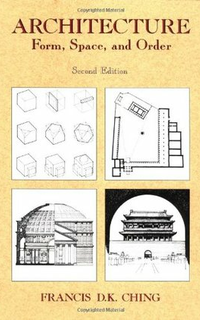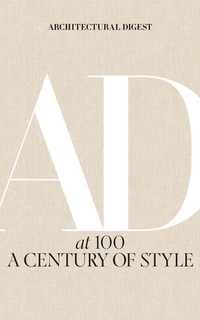Collection
THE BEST ARCHITECTURE BOOKS FOR BEGINNERS
Unlock your potential as an architecture enthusiast with our list of the best architecture books for beginners. Start exploring today.
- Curated in THE BEST ARCHITECTURE BOOKS FOR BEGINNERS
Discover the marvels of architecture from across the globe in World Architecture: The Masterworks by Will Pryce. This breathtaking book showcases over 80 of the world’s most remarkable buildings, including the Hagia Sophia, Gothic cathedrals, the Taj Mahal, and many more. With more than 350 vivid color photographs, you’ll be transported to these architectural masterpieces, experiencing their beauty and genius up close.
Not only will you feast your eyes on these iconic structures, but Will Pryce’s insightful commentary and accompanying texts provide a deeper understanding of the historical context and evolution of each building. From the Palace of Westminster to Gehry’s Guggenheim Museum in Bilbao, this book covers a range of architectural styles and civilizations, making it a must-have for anyone interested in architecture.
For those new to the subject of architecture, World Architecture: The Masterworks is the perfect introduction. Pryce’s comprehensive approach provides a comprehensive overview of the history and evolution of architecture, making it accessible and enjoyable for those without prior knowledge. So why not dive into the world of architecture today and discover the beauty and genius behind these timeless masterpieces?

- Curated in THE BEST ARCHITECTURE BOOKS FOR BEGINNERS
Unlock the secrets behind the world’s most incredible buildings with The Architecture Book. This engaging guide to architecture offers a fresh perspective on the subject through eye-catching graphics, illustrations, and diagrams. Whether you’re a complete novice or an expert looking to refresh your knowledge, The Architecture Book makes it easy to understand and appreciate the history and evolution of our built environment.
From ancient classical structures to modern-day skyscrapers, this comprehensive guide covers architecture from all over the world. With easy-to-follow text and striking illustrations, you’ll discover the most important ideas, technologies, and movements in the history of architecture. From Gothic cathedrals to 19th-century modernism, learn about the evolution of construction and the principles that shape our world.
Packed with facts, charts, timelines, and graphs, The Architecture Book presents complex information in a simple, accessible format. Explore the world’s most celebrated religious structures, from stunning mosques to magnificent churches, stupas to pagodas, and temples. Whether you’re an adult with an interest in the subject or a student looking to gain a deeper understanding of architecture, this book is the perfect introduction. Get ready to broaden your horizons and explore the world of architecture like never before!
- Curated in THE BEST ARCHITECTURE BOOKS FOR BEGINNERS
One of the best architecture books for beginners is, “101 Things I Learned in Architecture School” by Matthew Frederick. It’s a brilliant guide for architecture students, providing clear and concise lessons in design, drawing, the creative process, and presentation. From the basics of “How to Draw a Line” to the intricacies of color theory, this book offers a much-needed primer in architectural literacy, making complex concepts simple to understand.
Each of the 101 lessons is presented in a two-page format, with a brief explanation and illustration, making it easy to grasp the material. Written by an architect and instructor, the book is a valuable resource for navigating the design studio and other classes in the architecture curriculum. It’s a handy reference for both young designers and experienced practitioners, serving as a guide back to the basics when solving complex design problems.

- Curated in THE BEST ARCHITECTURE BOOKS FOR BEGINNERS
Perhaps the most interactive book on this list of the best architecture books for beginners, “Archidoodle: The Architect’s Activity Book” by Steve Bowkett is a unique and engaging guide to the world of architecture. With an array of captivating drawings and creative challenges, the book invites users to imagine and design their own solutions to architectural problems. From building towering skyscrapers to crafting cozy island homes, this book is a fun and interactive way to learn about all aspects of architecture, from site and materials to sustainable cities and everything in between.
With inspiration from renowned architects and examples of their works, “Archidoodle” is perfect for aspiring architects, students, and anyone who loves drawing buildings. Unleash your imagination, sketch, draw, and paint your way to a deeper understanding of architecture with this one-of-a-kind activity book.

- Curated in THE BEST ARCHITECTURE BOOKS FOR BEGINNERS
If you’re a teenager with an interest in architecture, this book is for you. Get an in-depth look at the fascinating and diverse field of architecture, where creativity meets technology, engineering, and psychology.
Explore recent innovations in sustainability and inclusivity in architecture, and learn about real-world projects through captivating illustrations and analysis. Delve into the history of architectural movements and designers, and get inspired by interviews with working professionals in the field.
Get practical career advice and discover the many paths you can take in the field of architecture, including residential and industrial design, historic preservation, urban planning, and more. This book provides a comprehensive overview of the five basic elements of architecture – structure, program, economics, aesthetics, and region – to help you understand what it means to be an architect.
This guide is the perfect starting point for teenage aspiring architects who want to learn about the industry and create a better world through sustainable design. Don’t miss out on ‘Architecture for Teens’ by Danielle Willkens.”
- Curated in THE BEST ARCHITECTURE BOOKS FOR BEGINNERS
This beautifully illustrated book, now in its Second Edition, is a comprehensive introduction to the essential vocabulary of every designer. With its focus on form, space, and order, this classic guide provides a rich source of architectural prototypes, each rendered in Ching’s signature style.
Revised and updated to incorporate contemporary examples and expand on key concepts, this volume delves into topics such as point, line, plane, volume, proportion, scale, circulation, and the interdependence of form and space. With numerous new hand-drawn illustrations, expanded sections on openings and scale, and a refreshed design, this Second Edition is both a visual feast and a practical guide to architectural drawing.
Whether you’re an aspiring architect, a student, or simply interested in the beauty of design, ‘Form, Space, and Order’ by Francis D. K. Ching is a must-have for your bookshelf. Its larger format, crisp images, and the author’s hand-lettered text make this book a true work of art. Don’t miss out on this classic guide to the principles of architecture, a timeless resource for anyone looking to understand and appreciate the art of form, space, and order.

- Curated in THE BEST ARCHITECTURE BOOKS FOR BEGINNERS
Get ready to discover the world of architecture with ‘Architecture for Dummies’ by Debrah K. Dietsch. This comprehensive guide is designed for anyone looking to understand the fundamentals of architecture, from history to appreciation.
From the Great Pyramids to Frank Gehry’s Guggenheim Museum in Bilbao, ‘Architecture for Dummies’ covers the highlights of architectural history, providing you with an in-depth look at the evolution of architecture and its impact on our world. You’ll learn how to look at a building and appreciate its design, understand when a building is simply a structure and when it’s art, and gain a deeper appreciation for the many aspects of architecture that make our built environment so fascinating.
In addition, this book includes a wealth of practical information and helpful tips, including the “Part of Tens,” which features fascinating lists such as Ten Great Architectural Masterpieces, Ten Biggest Architectural and Engineering Failures, and Ten of the Most Interesting Architects Working Today. With easy-to-understand language and a wealth of useful information, ‘Architecture for Dummies’ is the perfect starting point for anyone looking to expand their knowledge of architecture.

- Curated in THE BEST ARCHITECTURE BOOKS FOR BEGINNERS
A Field Guide to American Houses is a must-read for anyone interested in architecture, specifically domestic architecture in the United States. Since its initial publication in 1984, it has established itself as the authoritative guide to American houses and is widely acclaimed by architects and architecture enthusiasts alike. The second edition, fully updated and designed with fresh aesthetics, takes the comprehensive guide to the next level.
One of the new additions to this edition is a section dedicated to neighborhoods, which provides a historical context to the various architectural styles found within them. Another highlight is the expanded and new categories of house styles, each accompanied by photos and descriptions. This allows the reader to have a better understanding of the specific architectural style, and its defining characteristics. Additionally, the appendix on “Approaches to Construction in the 20th and 21st Centuries” offers a fascinating glimpse into the evolution of construction techniques and materials over time.
Finally, the expanded bibliography and the inclusion of 600 new photographs and line drawings make this book a visual treat. The clear, concise descriptions and the beautiful images combine to make A Field Guide to American Houses an excellent starting point for anyone interested in architecture, especially those new to the field. Whether you are a student, a professional, or simply an admirer of architecture, this book is a must-have for anyone seeking a comprehensive understanding of American houses.
- Curated in THE BEST ARCHITECTURE BOOKS FOR BEGINNERS
Architectural Digest at 100 is a celebration of a century of style, showcasing the best from the pages of the renowned international design authority. As the magazine marks its 100th anniversary, the editors have put together a rich visual history, delving into the archives and selecting years of rich material to include in this book.
The book ranges freely between present and past, featuring the personal spaces of private celebrities such as Barack and Michelle Obama, David Bowie, Truman Capote, and Diana Vreeland, as well as showcasing the work of top architects and designers such as Frank Gehry, Oscar Niemeyer, and Frank Lloyd Wright. The stunning images in this book, captured by renowned photographers like Horst P. Horst, Francois Halard, and Julius Shulman, will transport the reader to another time and place, allowing them to experience the beauty of architecture and design through the lens of Architectural Digest.
For beginners in the field of architecture and design, Architectural Digest at 100 offers an accessible introduction to the subject. With its rich visual history and showcasing of work from renowned architects and designers, this book provides a comprehensive overview of the evolution of style in architecture and design. The book is a great starting point for those looking to gain an understanding of the subject, and the stunning images make it a visually appealing resource for anyone with an interest in design.

- Curated in THE BEST ARCHITECTURE BOOKS FOR BEGINNERS
Case Study Houses by Elizabeth A. T. Smith is a comprehensive guide to one of the most unique and influential events in American architecture history. During the period from 1945 to 1966, the Case Study House program sponsored by Arts & Architecture magazine aimed to provide affordable and easily replicable prototype homes for the average American in response to the postwar building boom.
This book features all 36 model homes commissioned from some of the most prominent architects of the day, including Richard Neutra, Charles and Ray Eames, Eero Saarinen, and A. Quincy Jones. The criteria for the program emphasized the use of war-born techniques and materials best suited to modern living. The result of this program redefined the modern home and extended its influence not only across the United States but also around the world.
For architecture beginners, Case Study Houses provides an engaging and informative introduction to the subject. With over 150 photos and plans, this compact guide offers a comprehensive overview of the Case Study House program and its impact on modern architecture. Additionally, the map showing the locations of all sites, including those that no longer exist, makes this book an invaluable resource for anyone interested in learning about the history of architecture and design.

